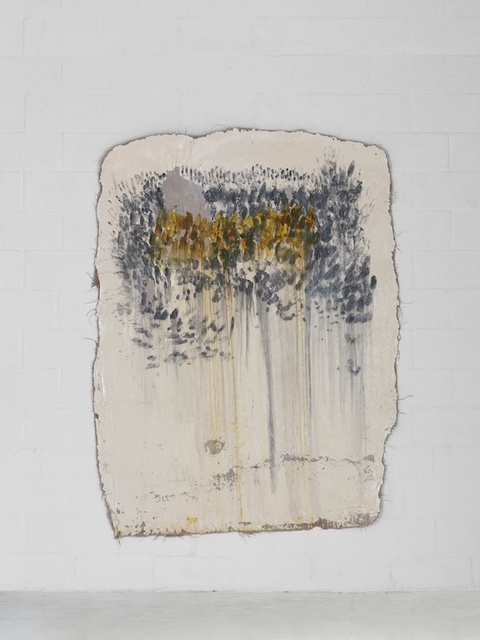My Enquiry (0)
No artwork has been selected.
Please choose an artwork to enquire.
Enquiry Submitted
Thank you for your enquiry and interest in our artists’ work. A member of the gallery team will respond shortly.
000%
24 August - 19 October 2023
9 Hopkins, a solo exhibition of expansive abstract paintings by Kamyar Bineshtarigh, is at once an exploration of gestural mark-making and an engagement with the urban fabric of Salt River, an historic industrial area located close to central Cape Town.
Southern Guild presents 9 Hopkins, a solo exhibition of abstract paintings by Kamyar Bineshtarigh, his first since joining the gallery at the beginning of 2023. Working intuitively, in conversation with his environment, the artist lifted each new work from the painted walls of his studio complex.
Bineshtarigh’s long-standing interest in script, language and mark-making has been deeply informed by his surroundings since moving into his studio in Salt River, a complex of aging industrial buildings on a triangulated island of land bordered by Hopkins, Aubrey and Yew Streets. With the buildings scheduled for demolition and redevelopment, 9 Hopkins represents a conclusive moment in his interaction with this particular site.
The exhibition finds its conceptual origin in the unintentional accrual of marks observed on the walls of a panel-beating workshop housed on the ground level of 9 Hopkins. These autoshop walls bore the innumerable hands and fingerprints of the panel-beaters who, over the years, had used the surrounding wall space to wipe paint, lacquer, grease and grit from their palms. Inscribed with these handprints atop remnant layers of debris and paint, the walls stand as accidental archives of presence, physical labour and human gesture.

Bineshtarigh experimented with creating facsimiles of these unstudied gestures using ink, graphite and spray paint, expanding upon a unique process of making that he first cultivated in his solo show Uncover, at Norval Foundation (2022). Painting directly onto large sections of his studio walls, he applies layers of cold glue to form a skin which is then peeled away to extract the base layer of pre-existing wall paint along with his own artwork. The works – especially those lifted from the oblong rectangles of the building’s pillars – echo the skeletal structure of the space itself.
The works in 9 Hopkins are expansive murmurations, alive with movement and layered intent. Bineshtarigh’s enquiry relates to the role of this intention and the perceivable transfer of energy in mark-making. The crux of this experientially driven exercise negotiates the curious space between art-making and the act of uninhibited being.
Like many of the buildings in the area – the most studied example being the nearby Rex Trueform clothing factory – the history of the Hopkins Street complex is enmeshed with constructions of race, class and gender. The buildings’ earliest architectural plans date back to 1935 when Salt River emerged as a garment manufacturing hub.
The area’s textile industry would ultimately share a complex historical relationship with the racial politics of the Apartheid regime. Prior to 1948, the industry’s workforce was predominantly white, but this changed when the country’s divide-and-rule policies designated the Western Cape a preferential area for Coloured labour. Bineshtarigh’s studio itself once housed a garment factory that employed only white women before the promulgation of segregationist policy shifted this to low-income labour of Coloured and later, Black women.
Following the democratisation of the country in 1994, South Africa’s borders opened to international trade. Local textile factories could no longer sustain themselves amid the influx of cheaper imports, eventually leading to widespread retrenchments and industry collapse. Now deteriorating and seemingly forsaken by the municipality, the complex is set to be demolished in October 2023, eradicating the multitude of livelihoods and activities the space currently facilitates. While the building borders multiple sites protected as local heritage zones, the Hopkins Street complex has either been deemed “not heritage worthy” or “requiring further investigation” by a heritage assessment commissioned by the site’s developers.
The implications of our built environments exceed the realm of the tangible; architectural spaces hold the physical and metaphysical vestiges of their lived histories. 9 Hopkins stands as a memorialisation of unconscious mark-making and mapping of human presence.
Artists
Works
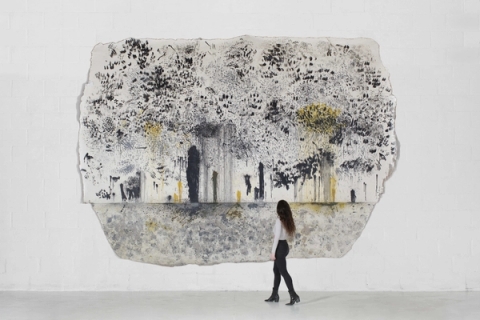
Kamyar Bineshtarigh
Studio Wall XII, 2023Wall paint, ink, graphite, spray paint, cold glue on hessian backing
173.3 x 244.1 in. | 440 x 620 cm

Kamyar Bineshtarigh
Panel Beaters Wall IV, 2023Wall paint, auto enamel, cold glue on hessian backing
75.3 x 163.8 in. | 191 x 416 cm

Kamyar Bineshtarigh
Panel Beaters Wall VI, 2023Wall paint, auto enamel, cold glue on hessian backing
89.4 x 73.3 in. | 227 x 186 cm

Kamyar Bineshtarigh
Panel Beaters Wall, 2023Wall paint, motor oil, cold glue on hessian backing
112.6 x 127.5 in. | 286 x 324 cm
Sold

Kamyar Bineshtarigh
Studio Wall V, 2023Wall paint, ink, cold glue on hessian backing
83.9 x 76 in. | 213 x 193 cm

Kamyar Bineshtarigh
Panel Beaters Wall VII, 2023Wall paint, motor oil, cold glue on hessian backing
23.6 x 22 in. | 60 x 56 cm

Kamyar Bineshtarigh
Panel Beaters Wall VIII, 2023Wall paint, auto enamel, motor oil, cold glue on hessian backing
23.3 x 36.6 in. | 59 x 93 cm
Sold

Kamyar Bineshtarigh
Panel Beaters Gate, 2023Wall paint, auto enamel, cold glue on hessian backing
84.3 x 117.4 in. | 214 x 298 cm
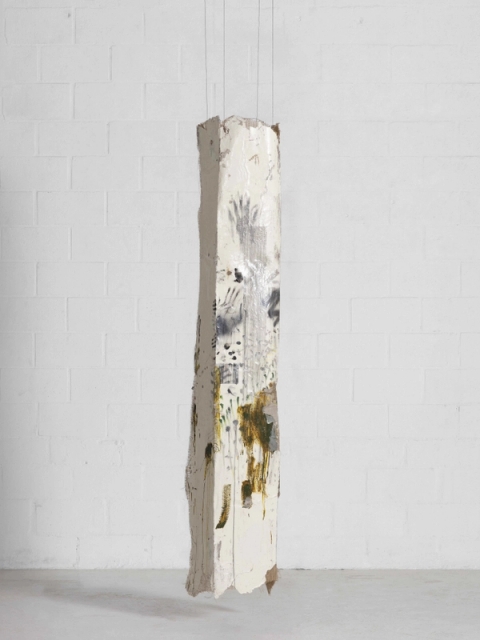
Kamyar Bineshtarigh
Pillar VIII, 2023Wall paint, ink, graphite, spray paint, cold glue on hessian backing
97.3 x 15 x 10.2 in. | 247 x 38 x 26 cm
Sold

Kamyar Bineshtarigh
Studio Wall VI, 2023Wall paint, ink, cold glue on hessian backing
79.9 x 77.1 in. | 203 x 170 cm

Kamyar Bineshtarigh
Studio Wall IX, 2023Wall paint, ink, graphite, spray paint, cold glue on hessian backing
81.1 x 198.4 in. | 206 x 504 cm

Kamyar Bineshtarigh
Panel Beaters Wall III, 2023Wall paint, motor oil, cold glue on hessian backing
107.5 x 127.1 in. | 273 x 323 cm

Kamyar Bineshtarigh
Studio Wall VII, 2023Wall paint, ink, cold glue on hessian backing
81.9 x 62.3 in. | 208 x 158 cm
Sold
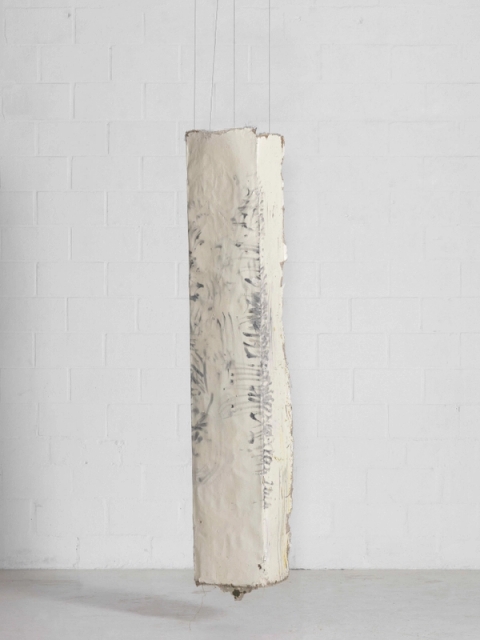
Kamyar Bineshtarigh
Pillar VI, 2023Wall paint, graphite, cold glue on hessian backing
85.9 x 14.6 x 10.6 in. | 218 x 37 x 27 cm

Kamyar Bineshtarigh
Pillar V, 2023Wall paint, auto enamel, motor oil, cold glue on hessian backing
106.3 x 17.8 x 17.8 in. | 270 x 45 x 45 cm
Sold

Kamyar Bineshtarigh
Pillar VII, 2023Wall paint, graphite, cold glue on hessian backing
102.4 x 15 x 9.5 in. | 260 x 38 x 24 cm
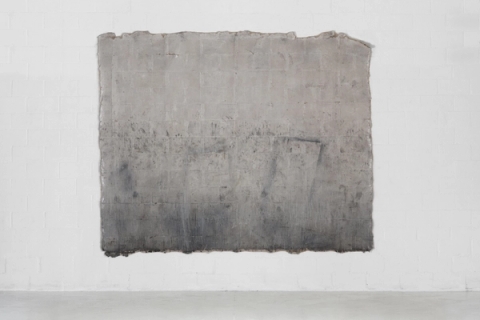
Kamyar Bineshtarigh
Panel Beaters Wall II, 2023Wall paint, auto enamel, motor oil, cold glue on hessian backing
108.6 x 129.9 in. | 276 x 330 cm

Kamyar Bineshtarigh
Panel Beaters Wall V, 2023Wall paint, auto enamel, cold glue on hessian backing
112.6 x 127.5 in. | 193 x 270 cm






